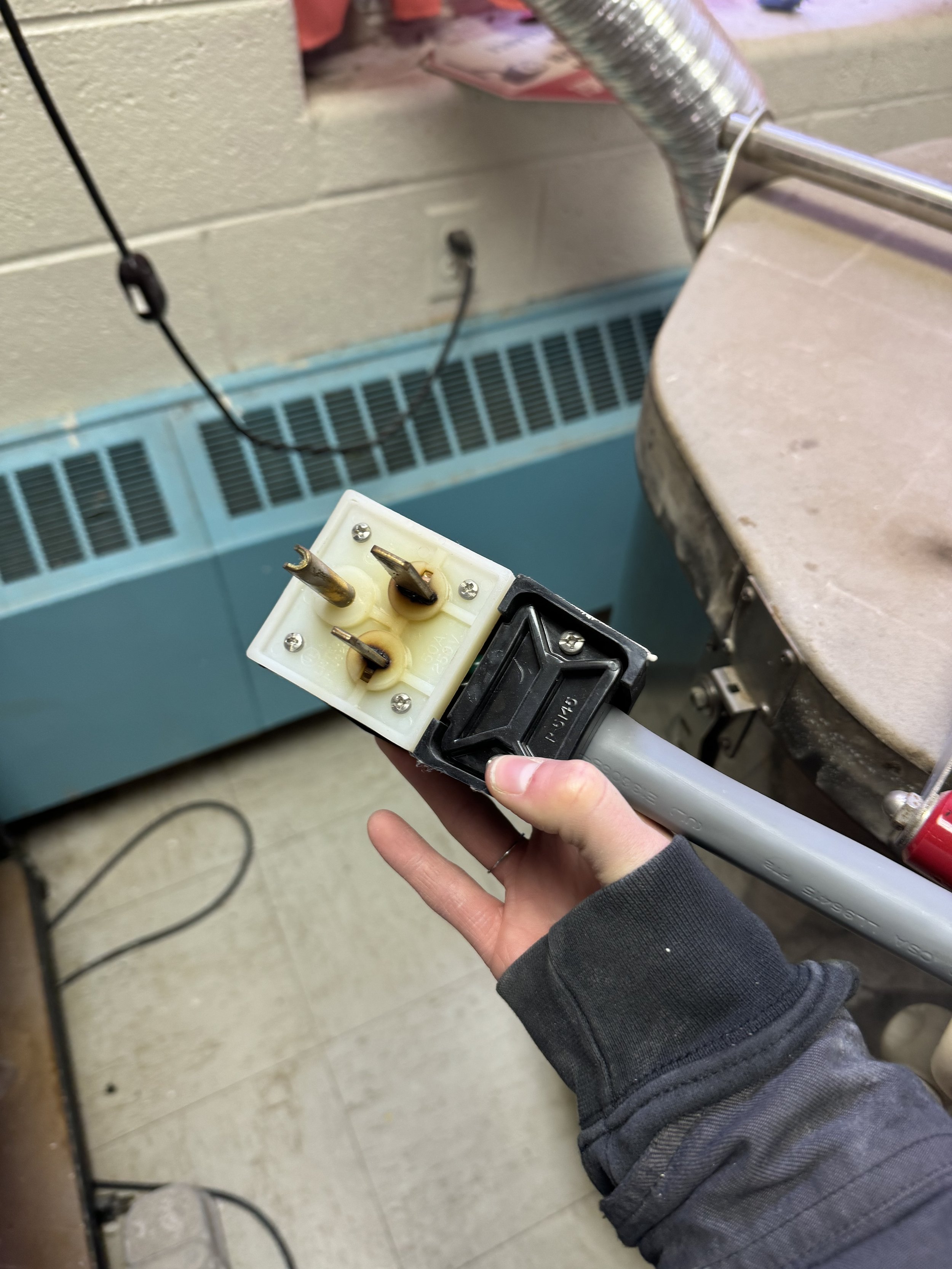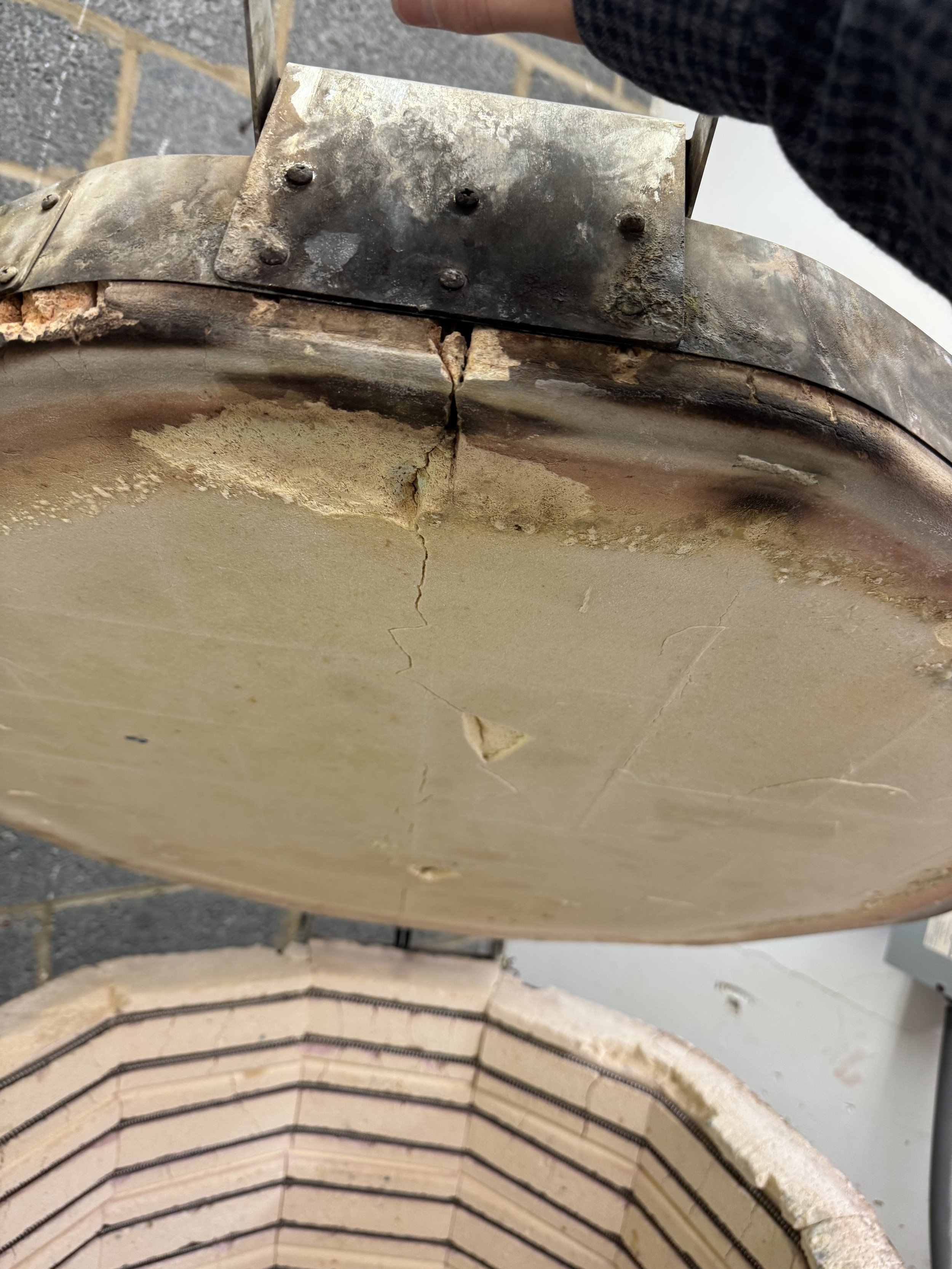10 Signs Your Electric Kiln Needs Service - Without Looking Inside the Control Box
1. Elements are falling from the brick or bunched in the corners
Elements are essential components responsible for generating the heat necessary for firing pottery and ceramics in a kiln. The heating elements in most studio style or top-loading ceramic kilns last about 100 to 150 firings, sometimes even longer for low-fire-only kilns. If your elements are falling out of hard element channels or soft brick, it might be time to replace them. Another indicator that elements are nearing there expiration is if they are bunched in the corners of the brick or they start to lose their even spacing and lean against one another.
2. The control board is lagging when you press Start/Stop
Most electric kilns are controlled by a standard type of control board with basic functions. Signs that your kiln might need service is if you press the Start/Stop button and you have a delayed response or no response at all. Kilns that are stored in garages, sheds and basements with no ventilation and exposed to weather are more likely to experience issues with control board function.
3. Work has exploded or melted in the kiln
Accidents happen, but if you have had a recent experience where work was fired to the wrong cone or you had a piece fall and melt to the side of the kiln it might be time for a service call. If melted glaze is not removed from the bottom of the kiln, soft brick, or element channels it will continue to re-melt each time the kiln is fired. It is best practice to have all glaze removed before firing your kiln again.
4. The thermocouples are exposed or leaving debris in the kiln
Thermcouples can be described as thermometer for high temperatures. They are made of metal and ceramic components and typically last about 75 firings. A kiln will often need to replace its thermocouple(s) once between element changes and again when the elements are replaced. Signs that your thermocouples will need to be replaced are if the ceramic insulators around the metal are broken, the thermocouple has been damaged from improper loading (hitting with a kiln shelve or using as post) or if you see excessive metal debris below the thermocouple when unloading the kiln.
5. The kiln is not vented
Vented kilns are not only better for the heath and safety of the user but also extend the like expectancy of the kiln. If your kiln is not vented you are more likely to see corrosion on the exterior bands, handles, hardware and lid bracket. Service may be required sooner from rusted or broken exterior components, stands, and electronics in the control box. Kilns with downdraft kiln vent systems will have extended element life compared to un-vented kilns
6. There is a crack in the lid
Overtime soft brick will deteriorate and crack, however cracks in the lid are a sign your kiln might need service. The repetitive motion of opening and closing lids often creates large cracks that run through the center of the slab. If the crack continues to expand, the brick flexes or there is brick debris in your kiln it might be time to have your kiln serviced. Cracks in the floor are usually less concerning, cracks in lids should be addressed promptly
7. The power cord has discoloration near the prongs
Kilns have high amperage and draw a lot of electricity for significant periods of time. A common sign your kiln needs service is if there is any damage to the cord or if you see discoloration on the prong side of the plug. We do not recommend unplugging your kiln often - and use great caution when you do - but heat damage at the plug head is an indictor to stop using your kiln and have it serviced!
8. Your kiln is firing slower or the work inside looks under fired
A tell-tale sign your kiln needs service is if your routine bisque or glaze programs are taking significantly longer to fire off. This could mean your elements are old and not functioning at there full capacity or an internal electronic component has stopped working. Another sign you may need service, is if a section of your kiln looks under fired or not as hot as other areas - the glaze may be less glossy or bisqueware could be more brittle.
9. The lid does not close all the way
Kiln lids when closed should sit flush and should not have a gap. Older and larger top loading kiln lids will shift over time and need adjustments at the back bracket to keep the lid closed properly. If you see a gap in your lid or that the back bracket is severely corroded it might be time to service your kiln.
10. Your kiln has never been serviced!
Kilns are fired repeated to 2000F and beyond. If you want to increase the lifespan of your kiln and ensure that all parts are functioning safely and correctly having your kiln inspected and serviced regularly.




